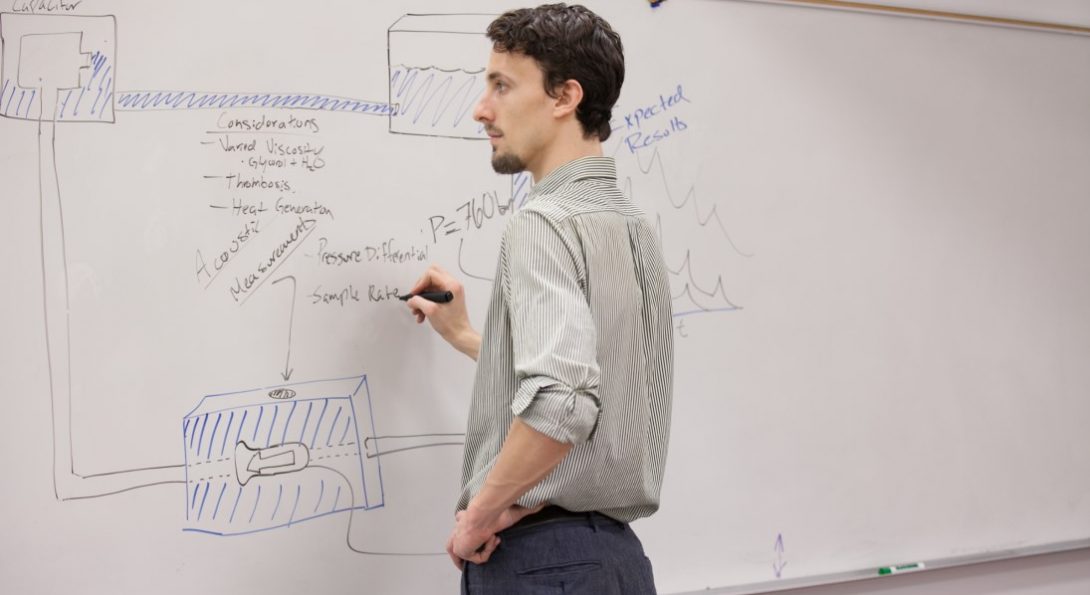Clinical immersion program has lasting effects on former students

Text block one Heading link

Inspiration for a future career can come from many places. It may come from a parent, an undergraduate class, a television show, or a job fair. For five years, some students in the Richard and Loan Hill Department of Bioengineering have had that revelation in the Clinical Immersion Program.
This six-week course exposes undergraduates to the clinical environment at UI Health, real-world problems, and introduces a method to address them.
Anthony E. Felder, a clinical assistant professor who co-directs the program along with Clinical Professor Miiri Kotche, said he feels the program is so beneficial to the students because it emphasizes that young engineers are being trained and molded to help solve problems.
“It’s what I would like to think is the full design experience,” Felder said. “The students start with a real problem. They then have to understand it, propose solutions to address it, and then validate these solutions with the clinicians who introduced the problem originally.”
Two of those former students whose experience in the Clinical Immersion Program inspired them to pursue the careers they have today are Sam Dreyer MS’ 17, client lead biomedical solutions specialist at Level Ex, a video game studio that makes games for doctors, and Christine Rachel Joseph BS’ 16, a human factors engineer in device development at Genentech.
Both credit the program with helping them start down their career paths. Dreyer said he was drawn to the program because while he had learned a lot about medical devices and technologies in his classes, he was missing a firsthand perspective from the doctors and patients who actually use them. While in the program, he shadowed physicians and residents in the orthopedics and urology departments and looked for issues and problems in their everyday routines.
“At Level Ex, I’m frequently tasked with converting a particular medical device or technique into a game mechanic for a player to use,” Dreyer said. “This requires me to interview physician specialists and translate their insights and ideas into actionable tasks for the artists and engineers on my team. I’m constantly building on the foundation of skills that I established during my time in the Clinical Immersion Program.”
Building on several years of program history, Kotche and Felder evaluated impact of the program in an academic paper published in the Annals of Biomedical Engineering titled “Perspectives on Bioengineering Clinical Immersion: History, Innovation, and Impact.”
“This program was developed to help students going into industry be more job-ready and competitive by understanding how unmet needs drive solutions,” Kotche said.
To study the impact, they created a survey and reached out to alumni who graduated in the last five years—including those who were not in the immersion program—to ask where they were and what they were doing in their careers. Those who were a part of the Clinical Immersion Program were asked whether they thought it had an impact on their job success.
On metrics such as the timeframe it took alumni to find a job post-graduation and the number of jobs they applied to, Felder said the study found no statistically significant difference between the students in the program and outside of it. However, program participants often credited the experience as helping them in their careers.
Dreyer and Joseph support this.
Joseph, who went on to receive her master’s degree in a joint program in Translational Medicine from the University of California at San Francisco and the University of California at Berkley, said, “looking back, it always seems that everything in life somehow leads to the next, and the journey to this huge company and dynamic job absolutely started in Clinical Immersion.”
After receiving her master’s degree, Joseph stayed in the Bay Area and started working for a startup company that was developing exoskeletons for humans. She said the startup had her wearing many hats as they worked through all the trial and error that new companies go through.
“That’s where I really started to lean into the role of a human factors engineer, which is all about developing devices for humans with an understanding of the realities of their environments, which I credit to the foundation of that exact focus on observation and innovation that was set in the Clinical Immersion Program,” Joseph said. “The program was so amazing. We felt like every day we were getting away with having fun, and every day it was innately fulfilling.”
While the NIH grant that initiated the program has ended, both Kotche and Felder are interested in continuing to offer the real-world experiences of an immersion program. Kotche noted that these types of experiences are a growing component of bioengineering education programs across the country.
“The findings warrant more studying,” Felder said. “It’s an exciting thing to keep doing.”